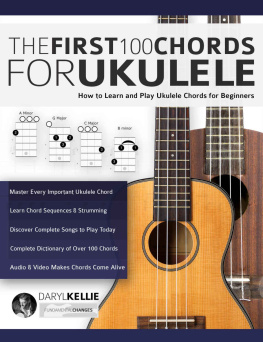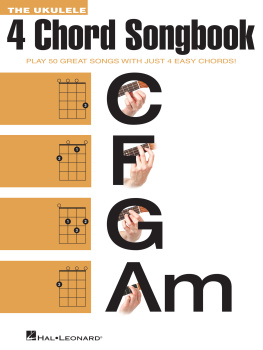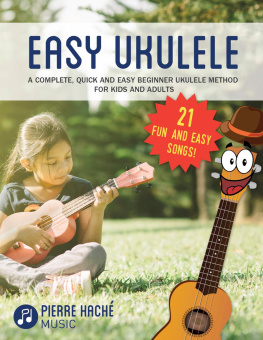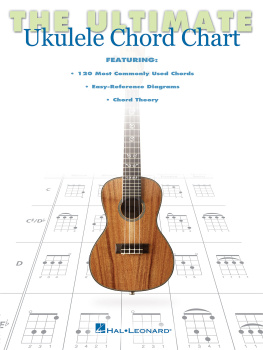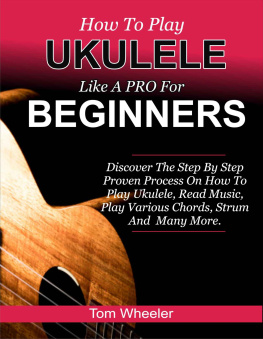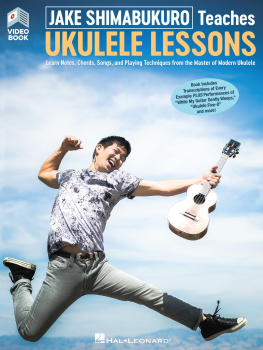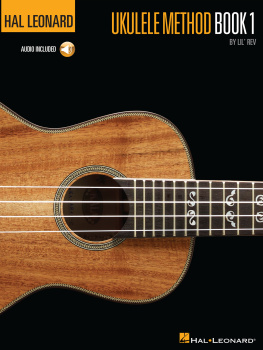Kellie Daryl - The First 100 Chords for Ukulele
Here you can read online Kellie Daryl - The First 100 Chords for Ukulele full text of the book (entire story) in english for free. Download pdf and epub, get meaning, cover and reviews about this ebook. year: 2020, publisher: www.fundamental-changes.com, genre: Children. Description of the work, (preface) as well as reviews are available. Best literature library LitArk.com created for fans of good reading and offers a wide selection of genres:
Romance novel
Science fiction
Adventure
Detective
Science
History
Home and family
Prose
Art
Politics
Computer
Non-fiction
Religion
Business
Children
Humor
Choose a favorite category and find really read worthwhile books. Enjoy immersion in the world of imagination, feel the emotions of the characters or learn something new for yourself, make an fascinating discovery.
- Book:The First 100 Chords for Ukulele
- Author:
- Publisher:www.fundamental-changes.com
- Genre:
- Year:2020
- Rating:4 / 5
- Favourites:Add to favourites
- Your mark:
- 80
- 1
- 2
- 3
- 4
- 5
The First 100 Chords for Ukulele: summary, description and annotation
We offer to read an annotation, description, summary or preface (depends on what the author of the book "The First 100 Chords for Ukulele" wrote himself). If you haven't found the necessary information about the book — write in the comments, we will try to find it.
The First 100 Chords for Ukulele — read online for free the complete book (whole text) full work
Below is the text of the book, divided by pages. System saving the place of the last page read, allows you to conveniently read the book "The First 100 Chords for Ukulele" online for free, without having to search again every time where you left off. Put a bookmark, and you can go to the page where you finished reading at any time.
Font size:
Interval:
Bookmark:
How to Learn and Play Ukulele Chords for Beginners
Published by www.fundamental-changes.com
By Daryl Kellie
Copyright 2020 Fundamental Changes Ltd.
With Joseph Alexander and Tim Pettingale
The moral right of this author has been asserted.
All rights reserved. No part of this publication may be reproduced, stored in a retrieval system, or transmitted in any form or by any means, without the prior permission in writing from the publisher.
The publisher is not responsible for websites (or their content) that are not owned by the publisher.
Over 12,000 fans on Facebook: FundamentalChangesInGuitar
Instagram: FundamentalChanges
For over 350 Free Guitar Lessons with Videos Check Out
www.fundamental-changes.com
Cover Image Copyright: Shutterstock megaflop / Tanakax3
Table of Contents
The story of the ukulele began in 1879, when Portuguese immigrants arrived in Hawaii, bringing with them a tiny guitar-like instrument often referred to as a machte . The locals soon began producing their own version of this instrument using native koa wood.
The word ukulele means jumping flea in Hawaiian and there are many theories as to where this unusual moniker came from. The most likely is that the instrument was a particular favourite of an official in the court of King Kalakaua a former British army officer named Edward Purvis. His small stature earned him the nickname jumping flea and so the ukulele was born.
In 1915, Johnah Kumalae, a Hawaiian ukulele maker and musician, showcased the instrument at the Pan Pacific International Exhibition. The instrument went down a storm and soon became popular across the United States, becoming closely associated with Vaudeville entertainers in the USA and light entertainers like George Formby in the UK. After the advent of Rock n Roll music, the ukulele fell out of favour with the masses for a few decades.
In the early 21st Century, the ukulele began to snowball in popularity in part, perhaps due to the enormous popularity of Israel Kamakawiwooles rendition of Somewhere Over the Rainbow and YouTube sensations such as Jake Shimabukuro. Soon, everyone from Taylor Swift to grunge rock icon Eddie Vedder could be seen playing uke. For many its portability, affordability, and relative ease of playing make it an excellent instrument to start out on.
This book is designed to help you master the most important chords and strumming patterns used on ukulele the building blocks of thousands of well-known songs. Once you get started, you will soon see that the same chord sequences are used over and over again, and that with just a few simple chords you can quickly be making music!
However, you will also see that this is more than a simple list of chords and strumming patterns its a whole ukulele learning method, structured so that as you progress through the book, your skills, technique and musicality will improve with each example.
Laki maikai (good luck!)
Daryl Kellie
October 2020
The audio files for this book are available to download for free from www.fundamental-changes.com . The link is in the top right-hand corner. Simply select this book title from the drop-down menu and follow the instructions to get the audio.
We recommend that you download the files directly to your computer, not to your tablet, and extract them there before adding them to your media library. You can then put them on your tablet, iPod or burn them to CD. On the download page there is a help PDF and we also provide technical support via the contact form.
For over 350 free guitar lessons with videos check out:
www.fundamental-changes.com
Over 12,000 fans on Facebook: FundamentalChangesInGuitar
Instagram: FundamentalChanges
Each of the performance tunes in this book has been captured on video, so you can see exactly how each one should be played. You can access them on the Fundamental Changes website here:
https://geni.us/ukulelevideos
Or, scan the QR code below to view them on your smartphone/tablet
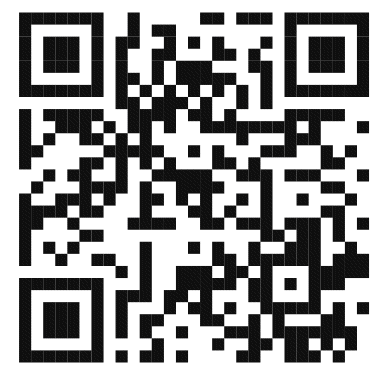
The following images show how the written notation of music relates to where you place your fingers on the ukulele to play a chord. In its most basic form, every ukulele chord can be written down as a simple diagram. The vertical lines below are the strings of the instrument, and the horizontal lines are the frets (metal bars). The black dots on the strings show where you should put your fingers to create notes and form chords.
Each black dot contains a number that indicates which finger you should use to play the string. If youre right handed, hold up your left hand with your palm towards you. Your thumb goes on the back of the ukulele neck and your fingers are numbered 1, 2, 3 and 4. Finger 1 is your index (pointing) finger and finger 4 is your pinkie. You can see this in the diagram below.
When you place your fingers down just behind each fret, always use the very tip to make contact with the strings. Avoid using the soft, flat pad of the finger as it wont make a good contact with the strings and will cause them to buzz or rattle.
The G Major chord below is labelled with all the information youll see on a chord diagram. An open circle at the end of the string means you should strum that string even though it doesnt have a finger placed on it. If a string has an X written on it, then you should avoid sounding it when you strum.
The final diagram shows a bar/measure of music notation with the G Major chord written out as music and tablature. Most of the time you wont need to worry about the dots or numbers on the notation, you can simply read the chord name thats written on top and strum the chord as shown.
However, the tablature is handy because it quickly shows how many times you should strum a chord in the bar before changing to a new chord, and is a quick way to show you which rhythms to play. Do take a moment to notice how the numbers on the tablature correspond with the fret numbers in the G Major chord diagram. Theres one line for each string, and the fret number you should play is written directly onto the string.
This book comes with an audio download of every single example. If youre ever unsure how something should sound, then listen to the audio track and copy the rhythms and sounds you hear there. Its normally a lot easier to do this than to try to figure things out from the notation, especially if you dont read music. Dont worry, well cover all this in more detail as we go on!
Heres a reminder of what the diagrams below mean:
Diagram 1 shows you how to number the fingers of the fretting hand. If you are left handed, the same numbers apply to your right hand
Diagram 2 teaches you the notes on each of the open strings of the ukulele. Try to learn these, as its always good to know a little bit about the instrument youre playing.
Diagram 3 shows how chords are notated on chord grids . Each dot is numbered and shows you which finger to place where.
Diagram 4 teaches you how the chord grid relates to where you place your fingers on the ukulele.
Diagram 5 shows how the chord will appear in standard musical notation and tablature (TAB for short). The TAB contains one line to represent each string and the frets you should play are shown by the numbers. Compare the tablature to the chord grid and see how they relate to one another.
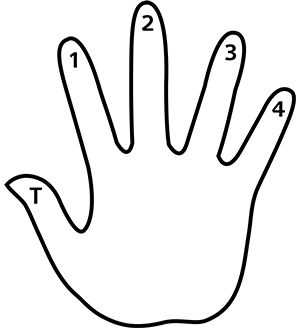
Font size:
Interval:
Bookmark:
Similar books «The First 100 Chords for Ukulele»
Look at similar books to The First 100 Chords for Ukulele. We have selected literature similar in name and meaning in the hope of providing readers with more options to find new, interesting, not yet read works.
Discussion, reviews of the book The First 100 Chords for Ukulele and just readers' own opinions. Leave your comments, write what you think about the work, its meaning or the main characters. Specify what exactly you liked and what you didn't like, and why you think so.

